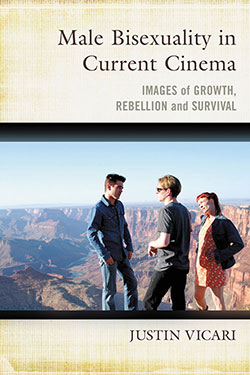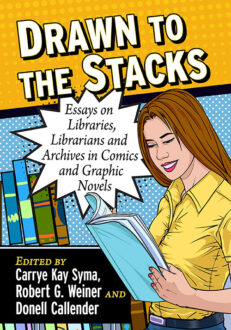Male Bisexuality in Current Cinema
Images of Growth, Rebellion and Survival
Original price was: $39.95.$31.99Current price is: $31.99.
In stock
About the Book
In recent decades, male bisexuality has become a recurring topic in international cinema, as filmmakers and their works challenge our ideas about sexual freedom and identity. In all of these films, more than a dozen of which are covered here, bisexuality is treated both as an actual practice and a complex metaphor for a number of things, including the need to adapt to changing environments, the questioning of rigidly traditional male roles and identities, the breakdown and regeneration of the structures of families, the limitations of monogamy, and the stubborn affirmation of romantic love.
About the Author(s)
Bibliographic Details
Justin Vicari
Format: softcover (6 x 9)
Pages: 255
Bibliographic Info: 13 photos, notes, bibliography, index
Copyright Date: 2011
pISBN: 978-0-7864-6160-8
eISBN: 978-0-7864-8526-0
Imprint: McFarland
Table of Contents
Preface 1
Introduction: Searching for Bob Elkin 7
Part 1. Personal Visions
1. Fifteen Minutes of the Future: François Ozon’s A Summer Dress 31
2. To Bend Without Breaking: Bisexuality and Adaptation in the Films of André Téchiné 39
3. Tentative, Tender … and Trendy? Gregg Araki’s Teen Trilogy 51
4. Rock Star Bisexuality in Todd Haynes’ Velvet Goldmine 64
5. For Whom the Bi Tolls: Craig Lucas’ The Dying Gaul and Ozon’s Water Drops on Burning Rocks 72
Part 2. Alone and with Others
6. Making the Man: The Bisexual Hero 91
7. Illegible Patriarchies: Bisexualizing the Family 108
8. Fazes and Mazes: Inside the Triangle 142
Part 3. Matters of Love and Death
9. The Schoolboy Crush and Its Ambiguous Object 161
10. Turning It On and Off: “Bi for Pay” 174
11. Allegories of AIDS 186
12. In His Wake: The Strange Power of the Dead Bisexual 204
13. At the Limits of Heterosexuality: The Woman’s Viewpoint in Anatomy of Hell 219
Conclusion: “It’s All Good” 232
Chapter Notes 235
Works Cited 239
Index 243
Book Reviews & Awards
“Recommended! Vicari has amazing insights into bisexuality and how it is expressed on film. His film criticism is both in-depth and fascinating”—Examiner.com; “the well-conceived structure, detailed reflections, and lucid writing style of Vicari’s study should interest both casual cineastes and scholars. It is certain to become an influential staple and offer solid grounding for further research and examination”—brightlightsfilm.com.






